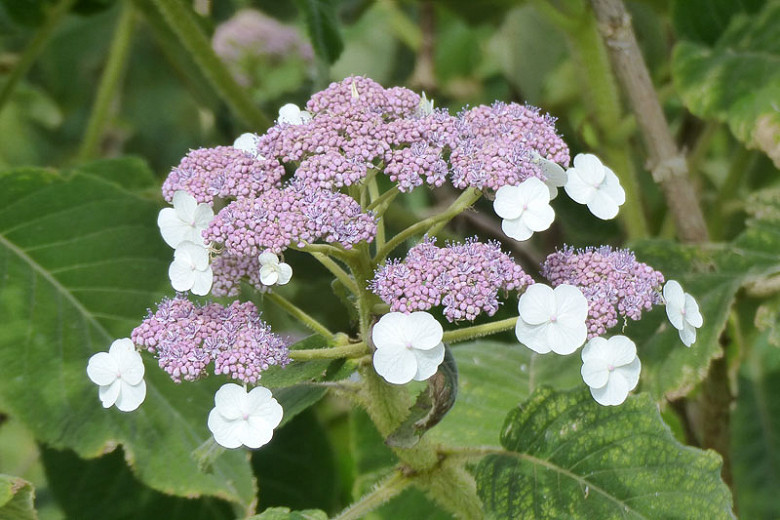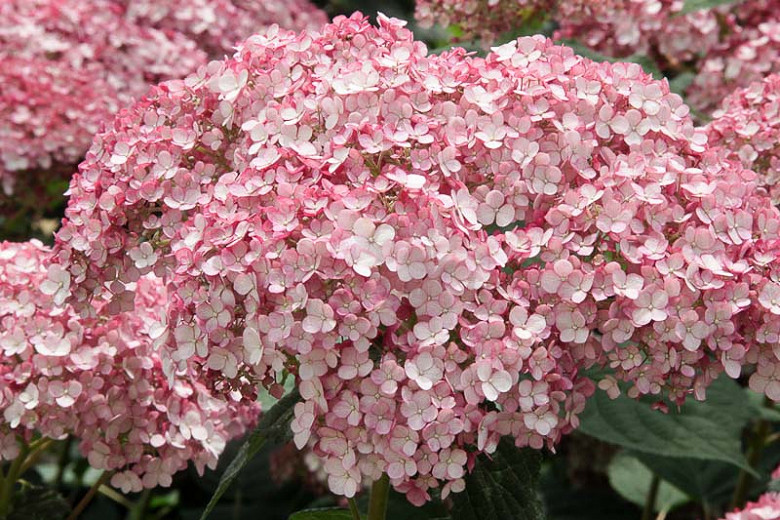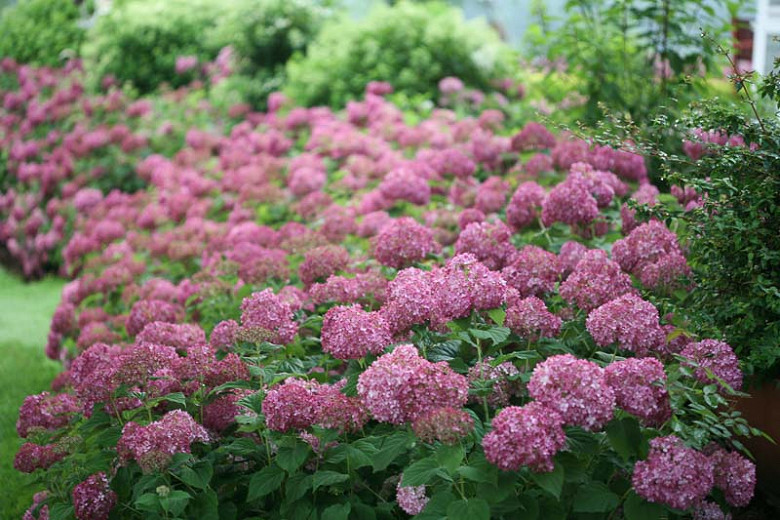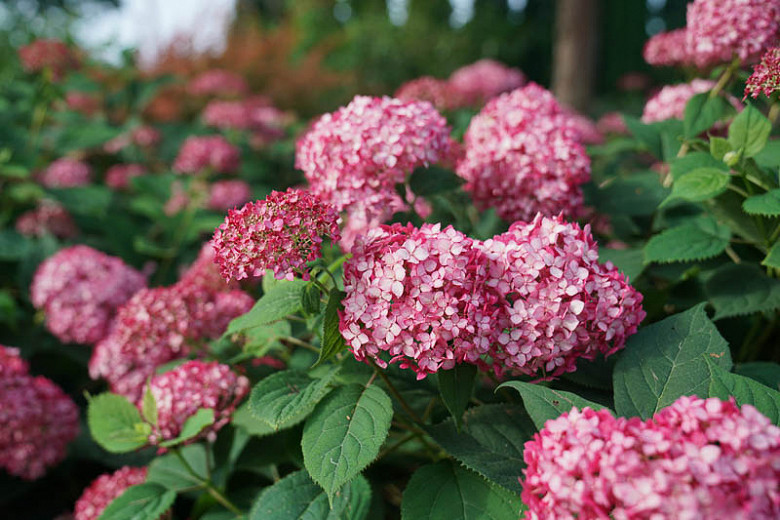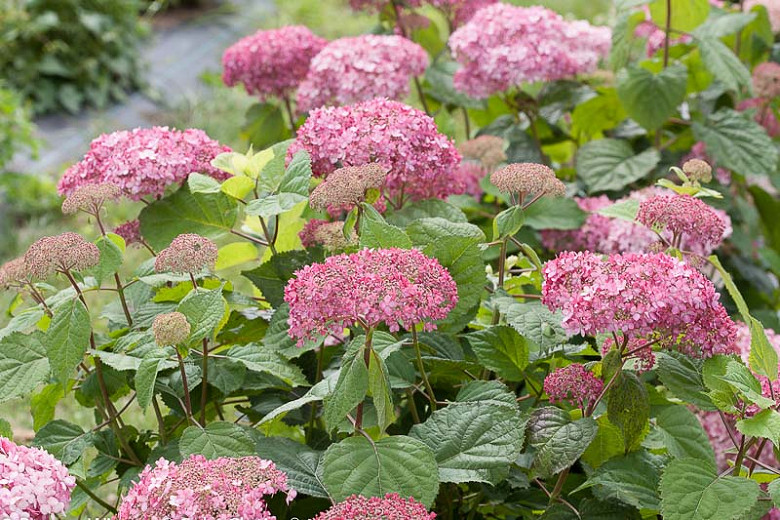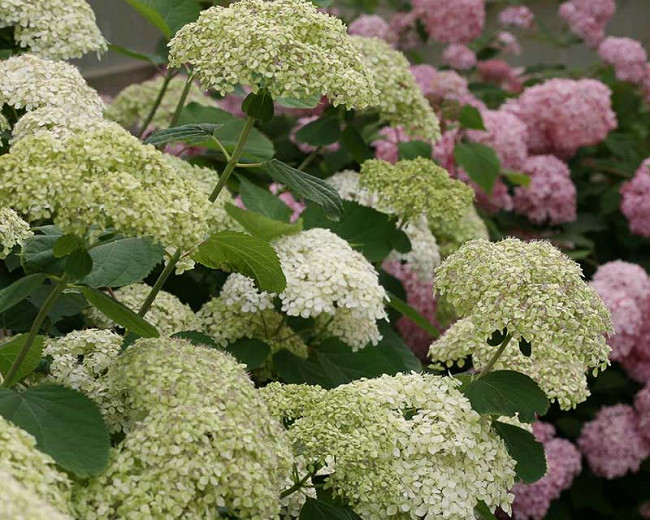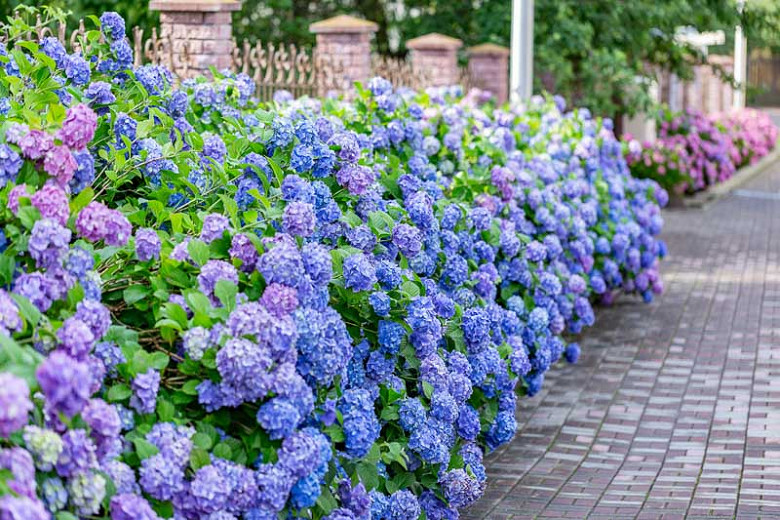Hydrangea aspera subsp. sargentiana (Sargent Hydrangea)
Hydrangea aspera subsp. sargentiana (Sargent Hydrangea) is an upright, rounded, deciduous shrub of open habit with peeling bark, sturdy shoots, and very large, velvety ovate leaves, up to 10 in. long (25 cm). From mid-summer to early fall, large, lacecap flower clusters, 8 in. across (20 cm), bloom for a couple of months. They feature small, purple, or blue fertile flowers surrounded by white ray flowers. This hydrangea adds a touch of elegance to a lightly shaded border.
Hydrangea aspera subsp. sargentiana (Sargent Hydrangea) is an upright, rounded, deciduous shrub of open habit with peeling bark, sturdy shoots, and very large, velvety ovate leaves, up to 10 in. long (25 cm). From mid-summer to early fall, large, lacecap flower clusters, 8 in. across (20 cm), bloom for a couple of months. They feature small, purple, or blue fertile flowers surrounded by white ray flowers. This hydrangea adds a touch of elegance to a lightly shaded border.
- Grows up to 3-6 ft. tall and wide (90-180 cm).
- Performs best in part shade in rich, evenly moist, well-drained soils. Prefers sunny mornings and shady afternoons.
- Perfect for foundation plantings, shrub borders, and hedges.
- Keep an eye out for aphids, capsid bugs, hydrangea scales, and leaf spots.
- Blue in acidic soils, the flowers turn pink in alkaline soils. To change their color, add aluminum sulfate to the soil to make the flowers bluer or add lime to the soil to make them pinker. Treatment should occur ahead of time (late fall or early spring).
- Remove spent flowers to promote new blooms.
- Little or no pruning is required. Prune after flowering by cutting back the stems to a pair of healthy buds. Prune out weak or winter-damaged stems in early spring.
- Propagate by softwood cuttings.
- Hydrangea aspera subsp. sargentiana is native to China.
- May cause mild stomach upset if ingested, and contact with foliage may aggravate skin allergies. Wear gloves and other protective equipment when handling.
- Toxic to dogs, toxic to cats, toxic to horses.
Requirements
| Hardiness | 7 – 8 |
|---|---|
| Heat Zones | 7 – 8 |
| Climate Zones | 4, 5, 6, 7, 8, 9, 14, 15, 16, 17, 18, 19, 20, 21, 22, 23, 24 |
| Plant Type | Shrubs |
| Plant Family | Hydrangea |
| Exposure | Partial Sun |
| Season of Interest | Summer (Mid,Late)Fall |
| Height | 3' – 6' (90cm – 180cm) |
| Spread | 3' – 6' (90cm – 180cm) |
| Spacing | 36″ – 72″ (90cm – 180cm) |
| Water Needs | Average |
| Maintenance | Low |
| Soil Type | Clay, Loam, Sand |
| Soil pH | Acid, Neutral |
| Soil Drainage | Moist but Well-Drained, Well-Drained |
| Characteristics | Showy |
| Garden Uses | Beds and Borders, Hedges and Screens |
| Garden Styles | City and Courtyard, Informal and Cottage |
